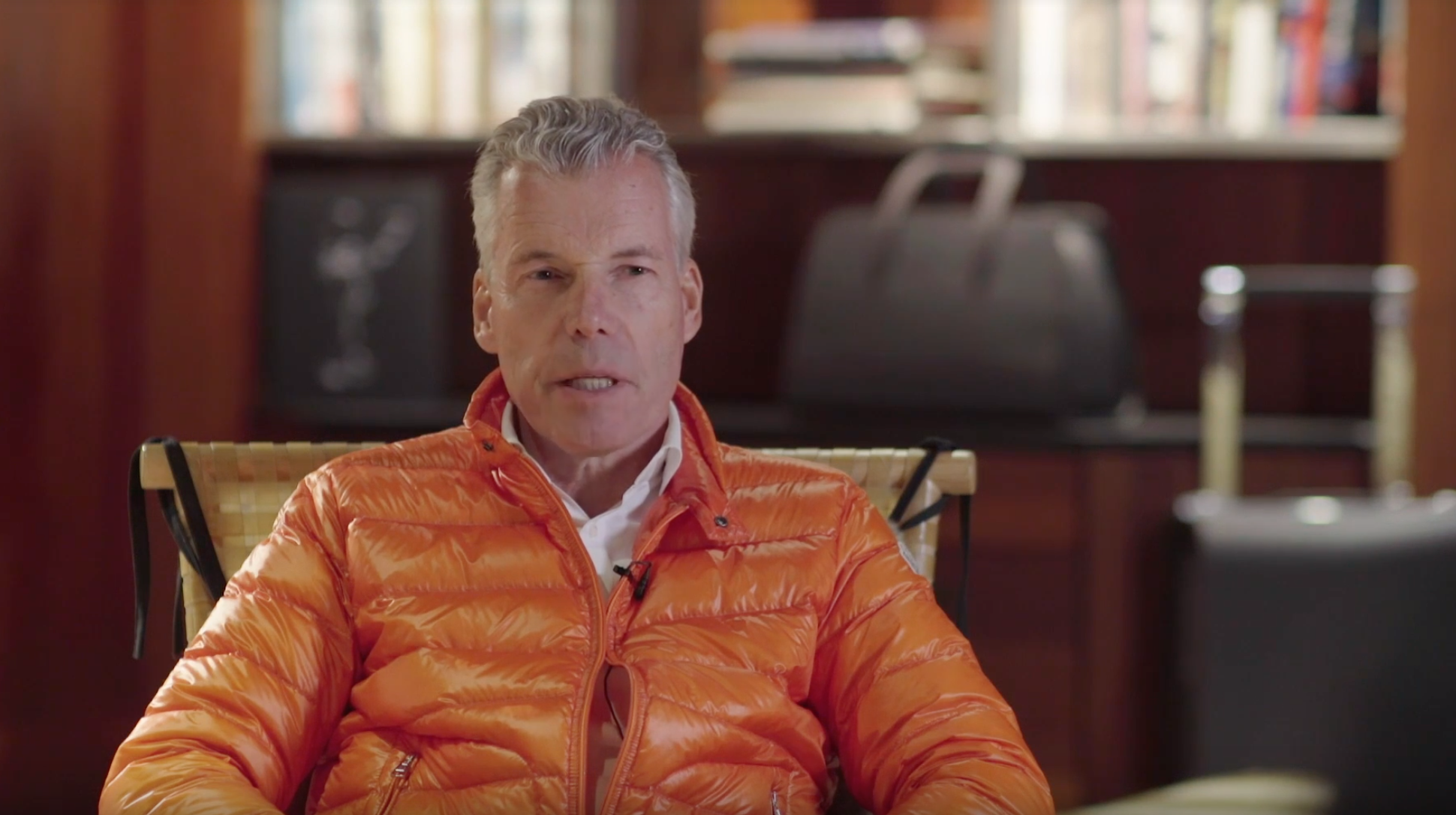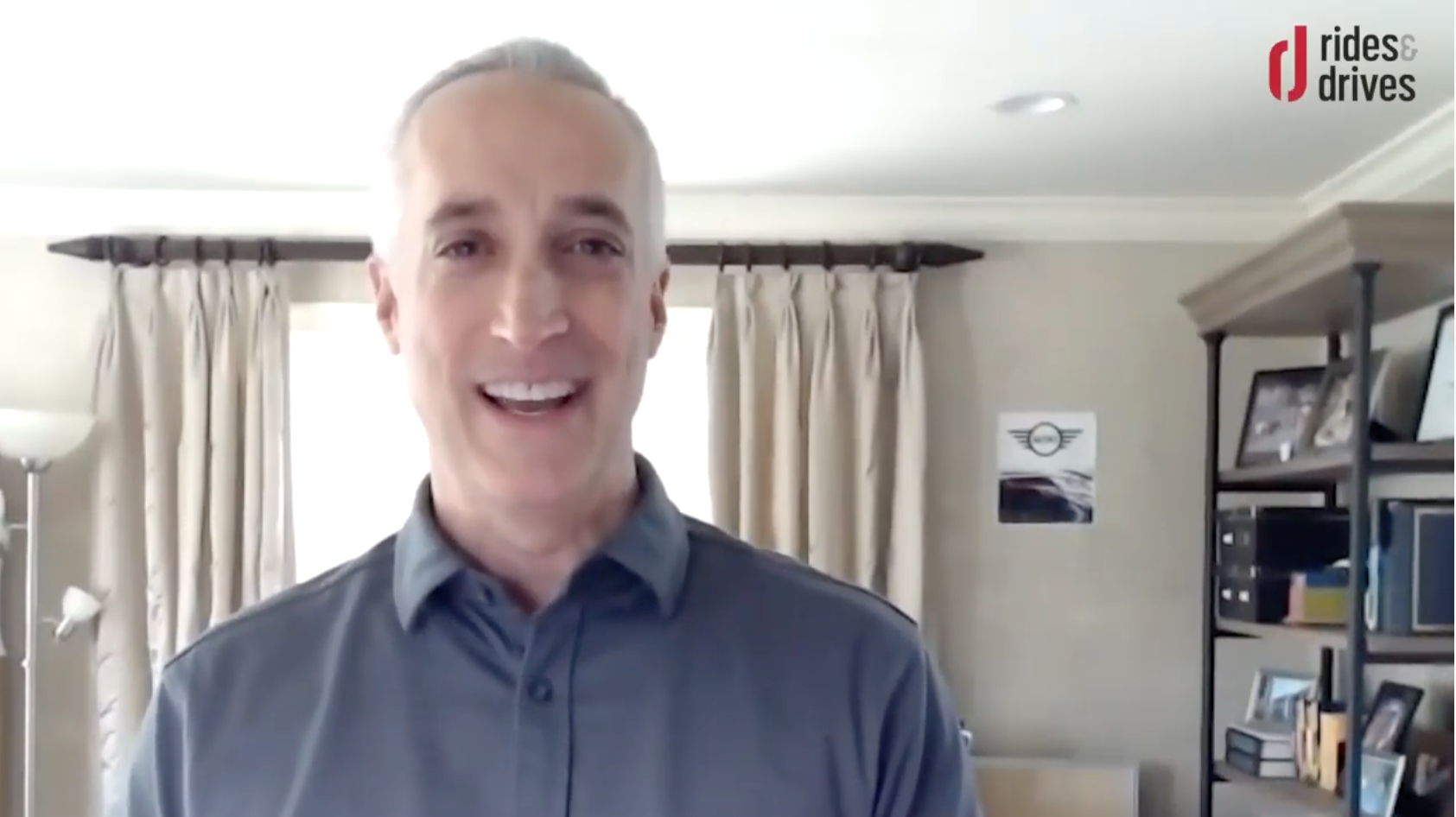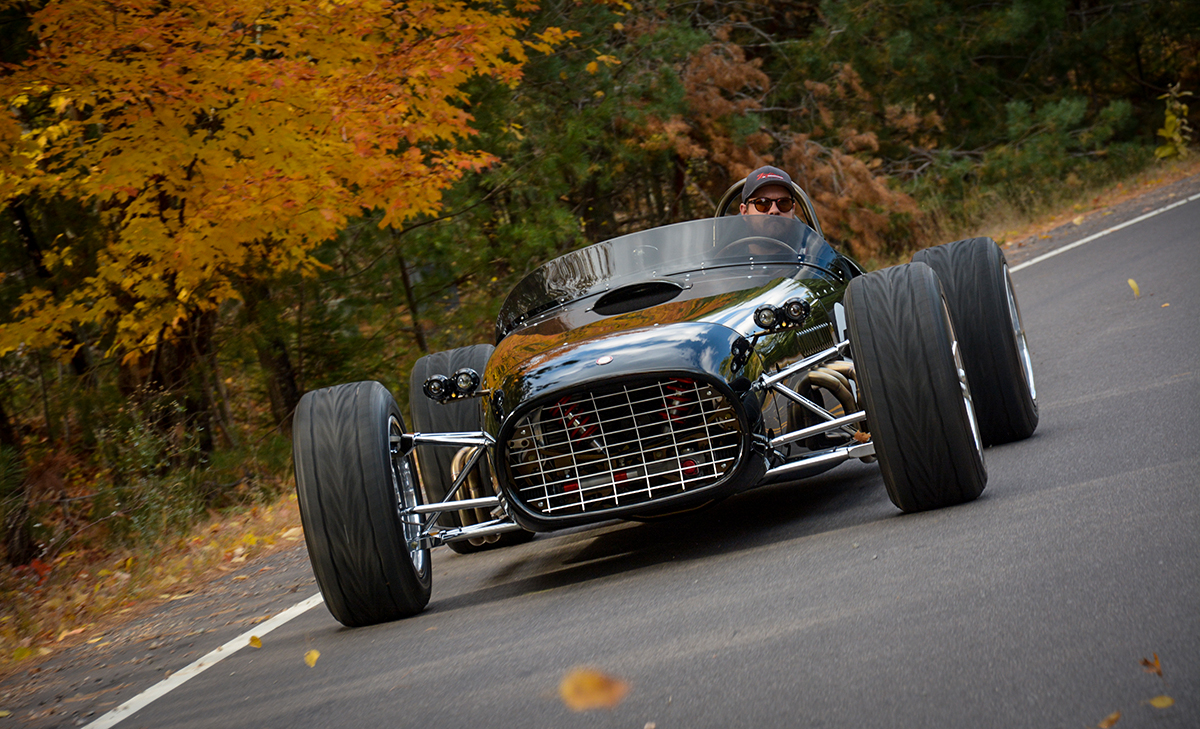Behind the Handlebars with Richard Hatfield of Lightning Motorcycles
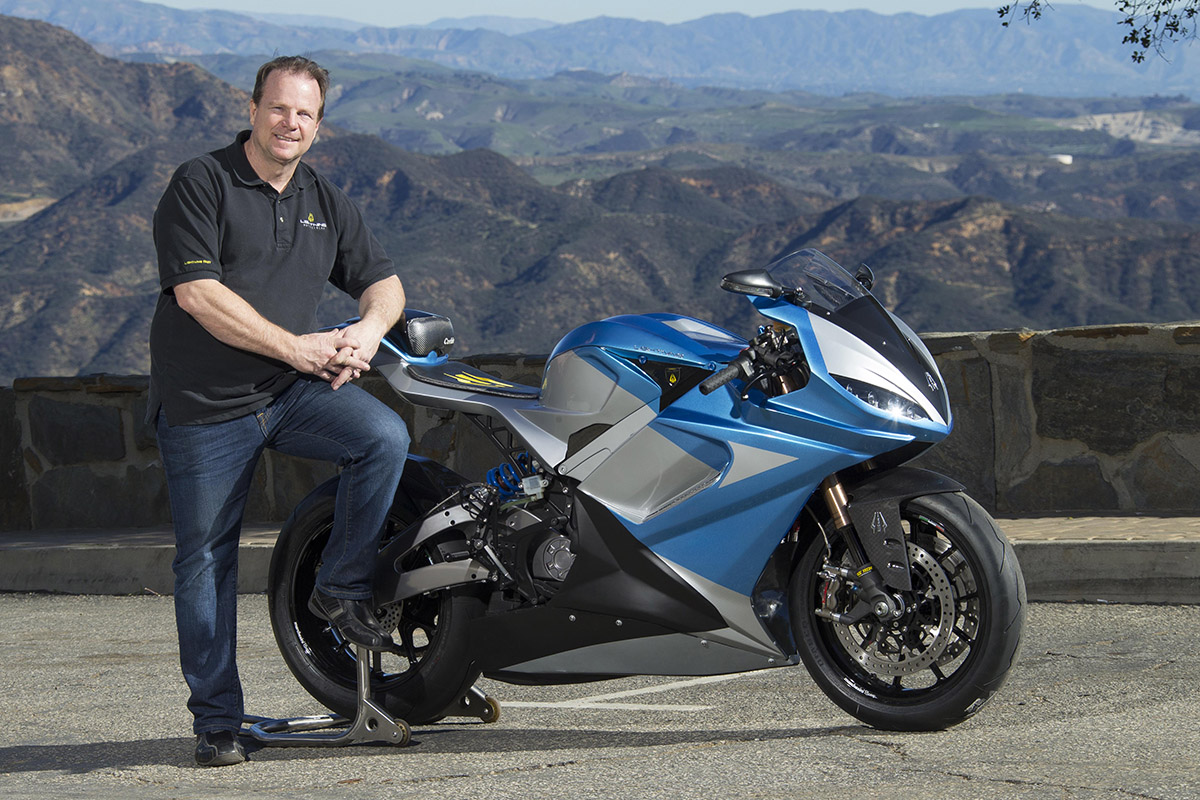
Lightning Motorcycles has been involved in developing and manufacturing electric two wheeled transportations (E2W) since 2006. Lightning builds the fastest production motorcycle in the world, has won many road racing competitions and set several world-speed records. Their latest model, the Strike, will be available soon.
We had a chance to sit down with Lightning founder and CEO, Richard Hatfield, to learn a little more about the man behind the motorcycle and find out where they’re headed next.
Tell me a little bit about your first recollection of being around motorcycles and the first bike you owned?
The first recollection was mini-bikes and mopeds. And then it was my first my first motorcycle, the Ducati 200 Scrambler. Then I got a single cylinder 250. I can’t recall if it was the Mark 3 or the Mark 4. It was their little single cylinder 250cc road bike, it’s what they based their road race 250’s on, the street version of it.
You started your first business at the age 15. Tell me a little bit about that experience and what lessons you took from that into your other businesses.
I think the take-aways, the lessons, are that if you want something you can get it if you’re really willing to work hard for it. That’s how you make things happen and make dreams come true. Be willing to make a plan, execute the plan and work hard, whatever it takes to make it. My parents encouraged me early on to work hard. Instead of making it easy for us to get things, they made it easy for us to work and earn. I think those have been great lessons to have early on and good core fundamental values that I’ve tried to pass on to my children.
You’ve always been a speed guy, having owned and raced Porsches. Why did you decide it was time to create Lightning? Why two wheels instead of four?
The reason to do Lightning was that curiosity and opportunity intersected. After doing the electric Porsche I was very intrigued and interested in electric drive systems. Basically, the way electric drive systems work, the minimal moving parts, minimal losses, high power density and high efficiency. After being involved with that, being a life-long motorcycle guy, thinking the motorcycle is smaller and lighter, it doesn’t have as much aerodynamic drag as a car and less rolling resistance. It would just be a better application for the electric technology, especially in the early days, as cars would.
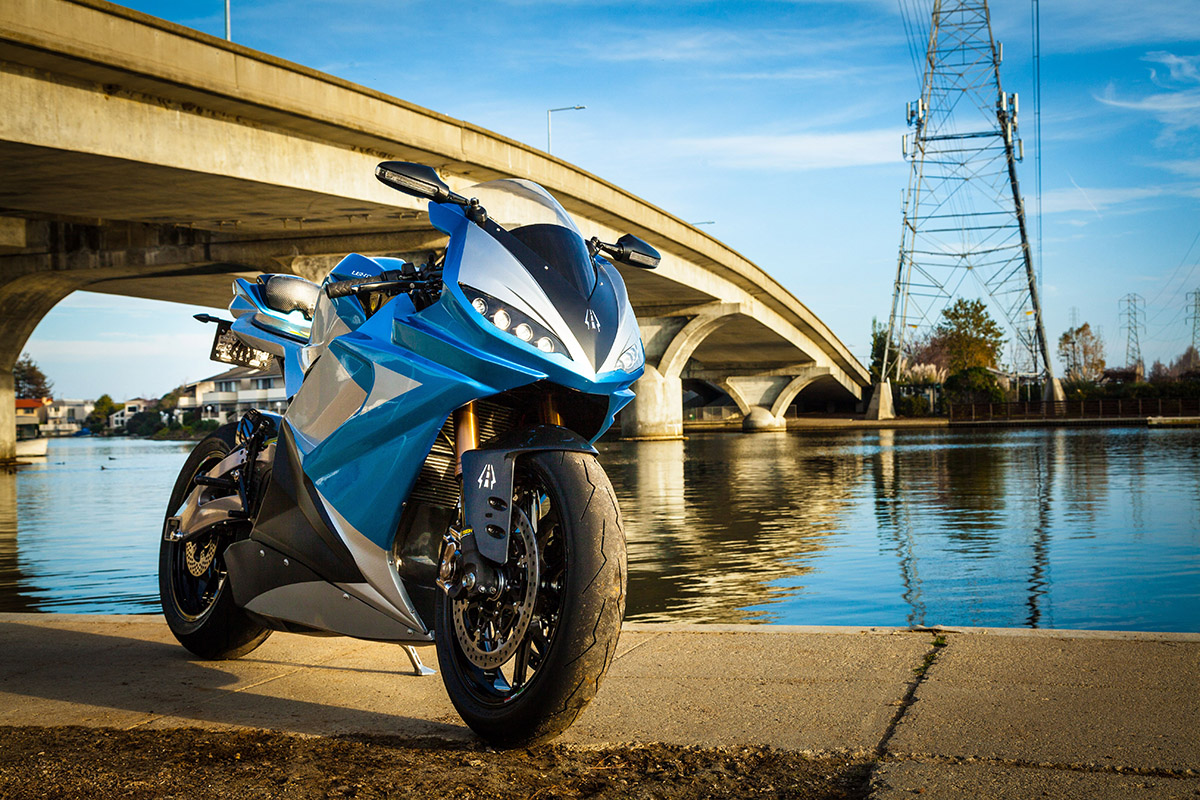
Are there things you have to think about with an electric motorcycle that you don’t with an internal combustion engine or vehicle?
Some of the big things, and very few people have gotten them right yet, are thermal considerations. Any time you make power you make heat. You have to be able to get the heat out of the batteries, out of the power electronics, out of the motor. You have to be able to do that in an efficient way. Those are considerations you think would be obvious but very few people have done that correctly. Most of the electric motorcycles will overheat. If you run electric cars on the track, after a few laps they will overheat in the same way. We’ve spent a considerable amount of time working on thermodynamics to be able to make an electric motorcycle that you could use the same way you would use a gas bike. The other thing is that since the center of the bike is essentially lithium batteries, you have to protect the batteries in the event of a crash. That’s a big deal and since batteries are still bigger and heavier than gasoline, weight is a huge issue. And centralization of mass, getting the mass centralized in a way so that you can still achieve the handling that you would on a gas bike.
The engineering is done there in San Jose, where is the actual manufacturing done?
We have 2 facilities; one in the southern part of Silicon Valley, in San Jose and another one that we own in China where we’re machining aluminum components and will start to make wiring harnesses and carbon fiber parts there.
What was the genesis behind the Lightning name?
Well, it just seems to be an appropriate name for an electric motorcycle. MotoHatfield just didn’t have the same ring to it [laughing].
What is the optimal number of bikes per year for Lightning to produce?
It’s a moving scale. The more bikes you build, the more economies of scale kick in, the better the price, the better technology you can provide for the same price. There are certainly business models that will work at virtually any volume. You could have the Koenigsegg model where you’re making a few multi-million-dollar cars a year or you could have the Honda model where you’re making everything from cars to lawn mowers to motorcycles. I think that for us to make the biggest difference we can in the world we would prefer to go more toward the Honda and Tesla direction. Make the bikes available to as many people as we can.
What separates Lightning from other electric motorcycles and motorcycle companies?
I think it is a singular focus on the vision of building the best electric motorcycles in the world, both from the performance/rider experience and the accessible value basis. So many other companies have either scaled too quickly where they’ve brought on so much investment capital that the investors have said we want you to be an engineering company or we want you to build forklift batteries, not motorcycles. Other companies have made changes and created successful businesses but not motorcycle businesses. One of the longer running electric motorcycle companies, I think they’re on their fourth management team. Once the investors basically controlled the board of directors, and the original visionary didn’t achieve their targets, they were replaced with the next group of professional managers. These are all viable business strategies but our strategy has been to maintain a singular focus and have the ability to stick to it. The tenacity or ability to stay on a single track, there is momentum that builds. It just becomes easier to become better at something if you focus on it for a longer period of time.
In your opinion, what is the biggest hurdle for motorcycle riders to get over when it comes to adopting electric technology?
I think most of the adoption hurdles now are concepts that riders have that may not be valid anymore. The concept that there isn’t enough performance there, or it’s too expensive or it takes too long to charge, or it’s not sexy or beautiful. I think a lot of people when they think of electric motorcycles the first thought is, okay, I’m going to pay a lot more for something that does a lot less. And that has really been the driving force behind us developing the Strike. For someone to choose an electric motorcycle over a gas-powered alternative, there has to be a reason to choose. You can’t expect a large segment of the market to pay more for less.
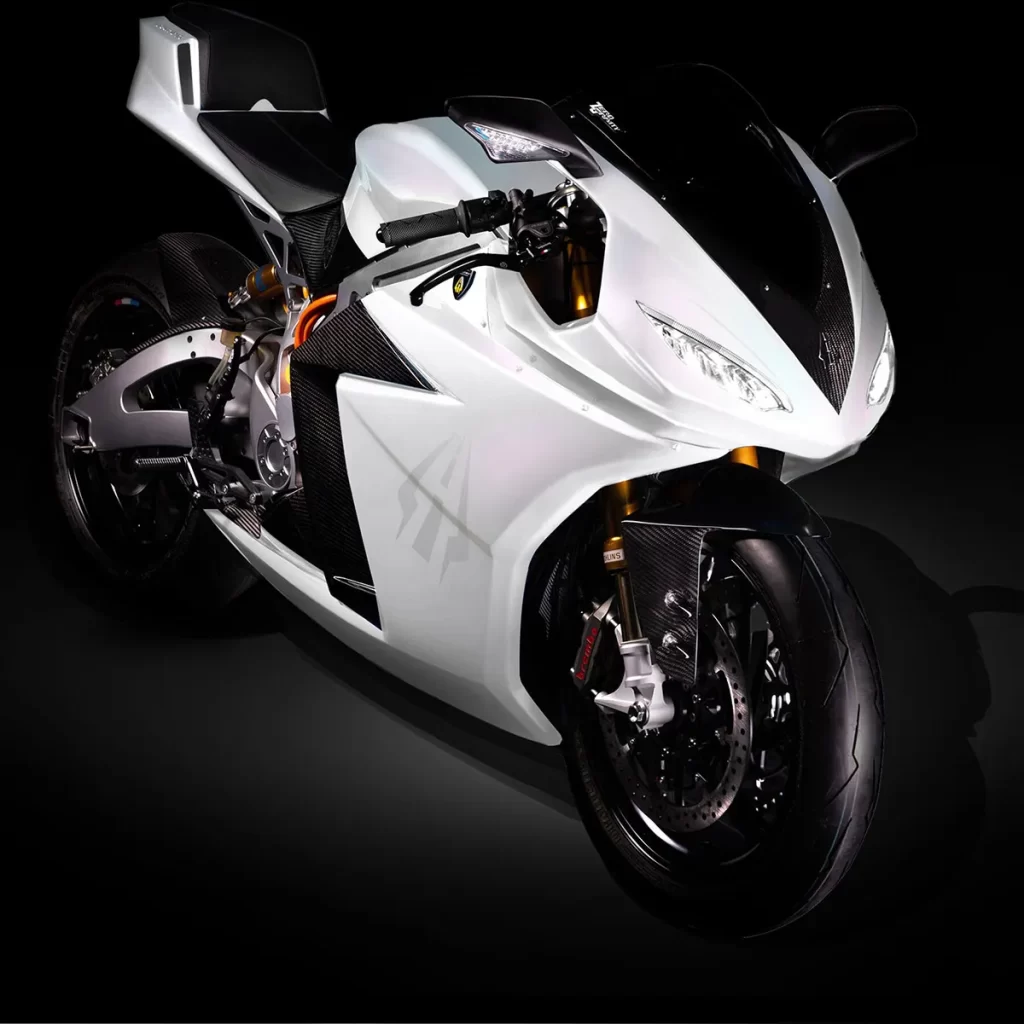
Ok, you’ve got the LS-218 and the Strike is coming, what’s next?
We have a whole series of new products that we’re working on. Both higher performance products and more affordable products. We don’t want to give too much away too early; we’d like to be able to reveal it when we’re ready to go to market with it. I think we have some things that we are working on that are more exciting than the things we’ve done so far.
Getting to this point has been a pretty long journey. Did you ever have thoughts of doubt creep into your head that maybe this isn’t going to work?
I’ve never looked back and thought this is the wrong choice. I’ve thought this is where the future is. There have certainly been days where we stepped off a cliff and we didn’t know what was going to happen but, so far, every time we’ve been in free fall the universe has found a way to keep us moving in the direction that we need to go. As long as that continues, we’re going to believe we’re on the right path and will continue going down it.
I know you can order the bikes off of your webpage, do you have a dealership network in development?
Yes, we’re in discussions now with regional tier one dealers to start carrying our bikes.
If I opened your personal garage door today what would I find?
There’s a perfectly boring Chevy Volt which is a great car for someone running an early stage company. They don’t cost a lot of money to own or operate. And they’re as reliable as a pair of Levi’s. Then there’s a Sunday car, a Lotus Exige, that I originally purchased to turn into an electric car but I’ve been too busy building motorcycles to do that. It’s been too good a car to tear apart yet. Then, at the shop we have a Porsche Boxster project that we have a 400 hp version of our superbike motor in. When I have enough evenings and weekends that I don’t have to work we’ll get finished and it will become our daily commuter.
Living in northern California, do you have a favorite riding destination or route?
My favorite route is Highway 9 off of 17 up to Skyline then out to any number of roads. Up in the mountains with great views, great curves and great places to stop and watch other motorcyclists.
What do you like to do away from work/motorcycles?
I wish I had an answer to that but right now this is pretty much a singular focus. It’s doing this, riding the bikes, a little bit of rest and recuperation and a little bit of family time. But, you know, we think there is a window of opportunity for us to make things happen and we’re focused on doing that.
Any final thoughts?
Our guiding principle is that the biggest barriers that we face are the ones we self-impose on ourselves. And if there’s anything that I’ve learned in the journey so far, it’s that we are all far more capable than what we give ourselves credit for. As long as I have that belief, every day is an adventure.
Thank you for taking time to speak with us, Richard. We’re excited to see where Lightning strikes next and where the future of electric motorcycles takes us.

